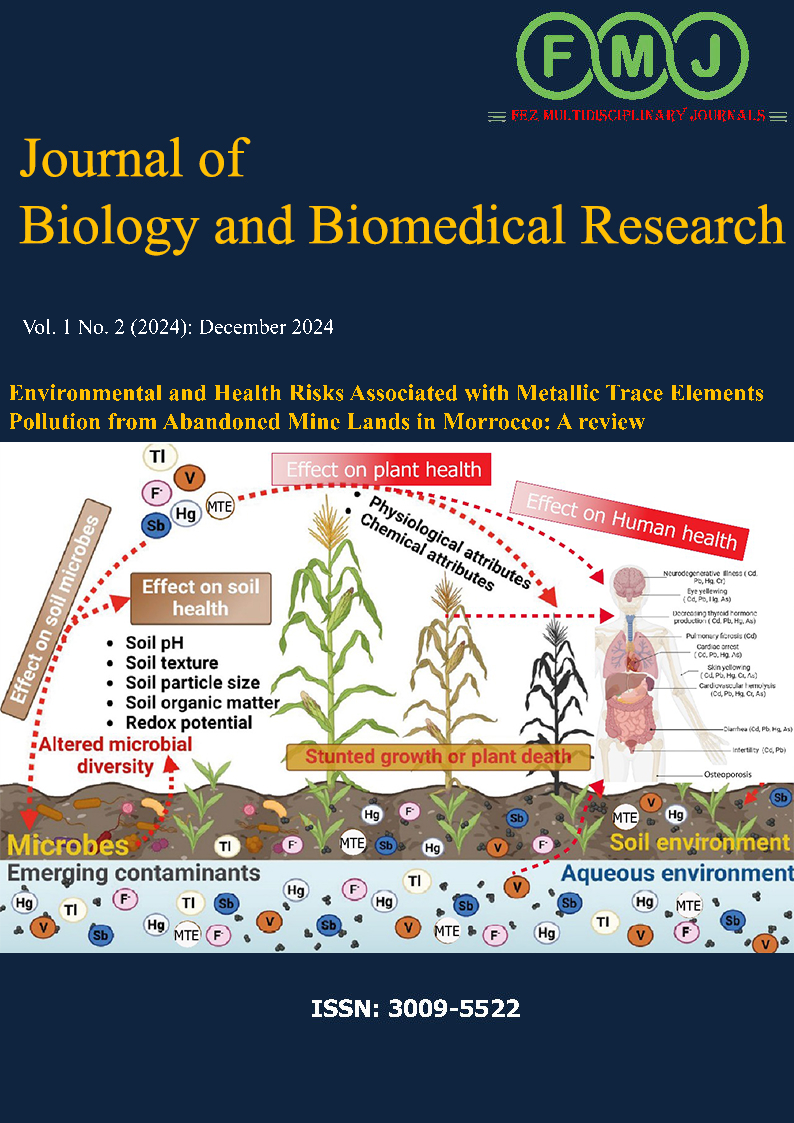HPLC analysis, hemolytic activity, and acute toxicity of Haplophyllum tuberculatum (Forssk.) aqueous extract and in silico study
DOI:
https://doi.org/10.69998/j2br.v1i2.19Keywords:
Hemolytic, Acute toxicity, H. tuberculatum, HPLC-DAD, PolyphenolsAbstract
Plant-derived compounds are increasingly explored as alternatives to synthetic drugs, which, despite their efficacy, may induce adverse effects such as hepatotoxicity and nephrotoxicity. This study aims to characterize the phytochemical profile of Haplophyllum tuberculatum (Forssk.) aqueous extract (HTAE) using HPLC-DAD and colorimetric assays, assess its acute toxicity, evaluate its hemolytic activity on rat red blood cells (RBCs), and perform molecular docking to predict interactions with hemoglobin. HTAE, obtained by infusing the powdered aerial parts in boiling water, yielded 15.08%. Colorimetric assays indicated a high total polyphenol content (41.18±1.99 mg GAE/g extract), a notable concentration of condensed tannins (7.09 ± 0.27 mg TAE/g extract), and a lower flavonoid content (4.33±0.45 mg QE/g extract). HPLC-DAD analysis identified gallic acid, caffeic acid, and rosmarinic acid as principal phenolic constituents. Acute toxicity was assessed in rats at doses of 1000 mg/kg and 2000 mg/kg over 14 days, with no significant changes in body weight, relative organ weights, or biochemical markers (ALAT, ASAT, urea, and creatinine), suggesting an LD50 > 2000 mg/kg. Molecular docking analysis demonstrated that rosmarinic and gallic acids exhibited notable binding affinities to human hemoglobin (-5.503 and -5.154 kcal/mol, respectively). HTAE induced only a weak hemolytic effect on RBCs. These findings highlight the potential safety of HTAE at tested doses and suggest its possible use in pharmacological applications while minimizing synthetic drug-associated toxicity.
Downloads
Downloads
Published
Data Availability Statement
Data will be available upon request from the corresponding author
Issue
Section
License
Copyright (c) 2025 Abdelkrim Agour (Author)

This work is licensed under a Creative Commons Attribution-NonCommercial-NoDerivatives 4.0 International License.





